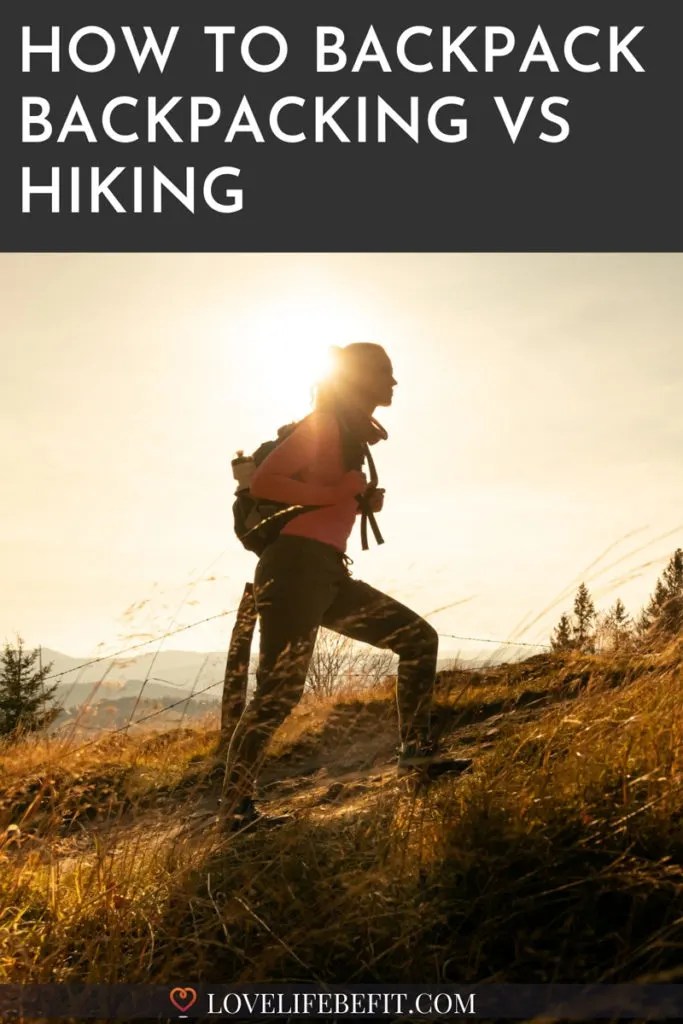Backpacking is really just hiking with more gear on your back. The romantic idea of a backpacking trip is a multi-day trek, camping out in the wilderness in a little tent under the stars.
Self-sufficient and surviving in a natural environment. Just you and your pack going for a long hike.
When you hike, you generally carry less weight and don’t go as far or for as long…
Backpacking, hiking, or even trekking are terms that are often confused and can mean different things to different people. They are all types of walking with a backpack on your back for an extended period of time.

What is hiking?
Hiking is walking in nature, often in mountainous terrain. It can be on footpaths, nature trails, or bushwacking across wide-open pathless areas.
The world is full of wonderful places for hiking and it’s the best way to explore. So many mountainous areas are only still only accessible on foot. Hiking is a chance to get fit and enjoy the great outdoors at the same time!
Hiking is a term that’s widely used in the United States but it’s less popular here in the UK. I normally say I’m going for a walk, or a long walk, not a hike. My walks are always in nature, often on rough terrain, and I normally walk up big mountains!
Use the term walking in the US and most people think you’re power walking around the block.
We have lots of different terms for hiking in the UK such as strolling – hiking at a slower pace, rambling – hiking in large groups of mostly baby boomers with loud voices, and trekking.
What is backpacking?
Backpacking as a term has been hi-jacked by gap year students. It means going abroad on a shoestring with just a pack or suitcase, clutching a Lonely Planet guide.
You return unable to hold down a proper job and will forever bore your friends with phrases such as “When I was in KL…”.
Obviously, that’s not the only meaning of backpacking. In the US, backpacking has become quite a serious pursuit.
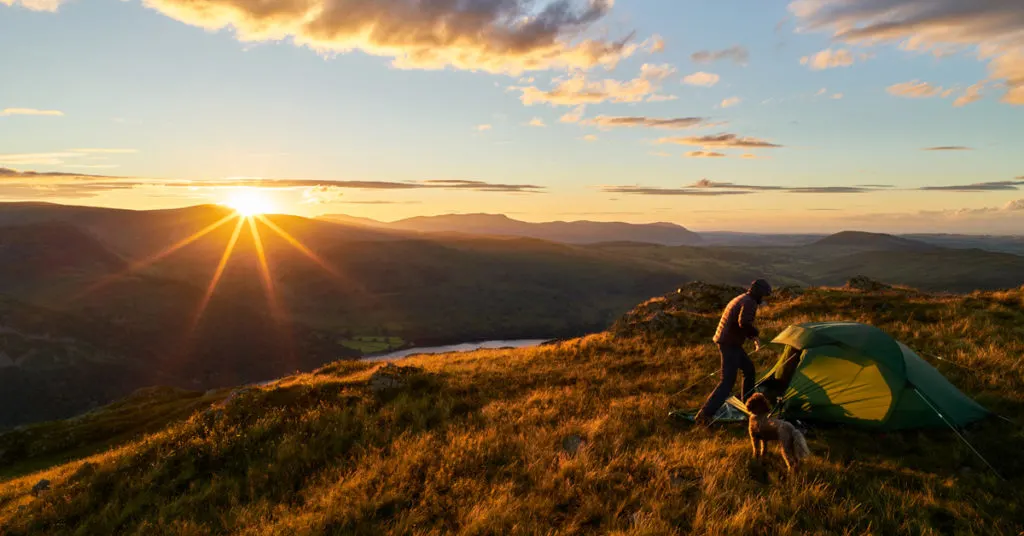
Thru-Hiking
National trails, such as the Pacific Crest Trail, the Appalachian Trail, and the Continental Divide Trail,(known as the Big 3 or Triple Crown of Hiking), have become targets for thru-hikers in North America – people who attempt to complete an entire trail, end to end hiking, in one go.
Complete the Big 3 in the National Parks and you’ll have ticked off almost 8000 miles and 1 million feet of height gain. To add to this mind-blowing challenge, most thru-hikers are completely self-sufficient backpackers. Apart from some essential resupply points, they will hike for days carrying everything they need on their backs.
That’s thru-hiking – the most hardcore of all hiking types! For more modest ambitions, you’ll still need to get fit and do some training before your first backpacking trip. Find out the best way to train for a trekking (or backpacking) trip.
Backpacking Trip
Not all backpacking trips need to be extreme end-to-end multi-day trips. As a beginner, it’s best to start with just a few days on the trail.
If you’re spending at least one night under the stars, it still counts as backpacking.
What is trekking?
Maybe you don’t need to know this, but trekking is another word you’ll come across. The word originates from Afrikaans but its modern use for hiking multi-day trips is routed in the Himalayas.
It can be a little different from backpacking. For example in Nepal, most people trek from teahouse to teahouse. It’s really a series of day hikes.
Instead of backpacking with true self-sufficiency, these trekkers are carrying small packs with just a sleeping bag and lightweight clothes. The teahouses provide food and a bed for the night. Some trekkers use porters to carry their gear and guide them along the trail.
I’ve had a lot of fun on trekking trips around the world, moving fast and light from one night’s accommodation to the next. With less weight on my back, I can cover great distances quickly. Purists may scoff, but I don’t always want to carry heavy loads when I’m backpacking.
Trekking Companies
Trekking companies have evolved to provide trekkers with everything they need to survive in a natural environment. They enable complete beginners to access inaccessible terrain and explore some of the most outstanding mountainous areas.
By carting their gear from A to B, putting up tents for them, supplying meals, and acting as guides, trekking companies allow people who could never survive in the wild on their own to enjoy a hiking experience – all of course for a fee.
If you’re new to hiking, it’s a good idea to start backpacking by taking a trip with a trekking company. It’s a good way to make like-minded friends and can be a lot of fun.
Personally, I like my independence on the trail. The challenge of carrying my own loads, setting my own pace, and being self-reliant.
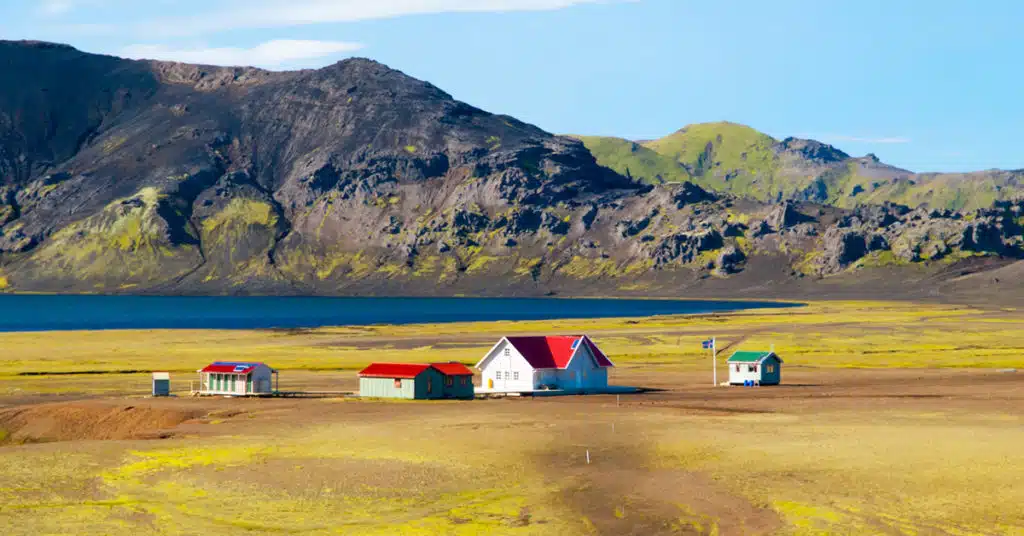
The Different Types Of Hiking And Backpacking
We’ve already talked about thru-hiking but what are the other types of hiking?
Day Hiking
Day hiking is the most common type of hiking. It involves taking a day pack and doing an out-and-back trip that’s usually under 20 miles long. (Some of my favorite day hikes are in Costa Blanca).
Day hikers only need to carry a small pack with some water, snacks, and emergency gear like spare clothing, sunscreen, and a first aid kit.
The amount of emergency gear you carry depends on the difficulty level of the hike. For greater distances or hiking in wild, mountainous areas you may need to take more precautions. I always carry full waterproof clothing and often take an emergency shelter.
Day hikes are a good way to spend time outdoors when you’re new to hiking. Find an easy beginner trail to follow before trying advanced hikes that require more experience.
Section Hiking
This is where you walk a section of a long trail such as the Appalachian Trail by hiking about 20 miles in one direction, then returning to your car. At most you’re only carrying what you need for an overnight camp.
Section hiking is popular with weekend warriors who only have the weekend for hiking and need to be back at their desks on a Monday morning.
Base Camping
A good option for beginners is base camping. This is where you hike into the mountains, camp at a remote location with no facilities, and use the camp as a base for day hikes.
After a couple of days camping, you return to your vehicle. It’s a little bit like traditional alpine climbing. Take everything you need a short distance into a base camp, then day hike around the base.
This type of hiking means there are fewer logistics involved and it’s possible to do more challenging routes and longer hikes without being weighed down by heavy loads.

Fastpacking
This is ultralight backpacking where you carry very little gear and travel at a fast pace. Fastpacking is a good way to cover greater distances and is often used by experienced hikers for more arduous hikes.
It’s a good option when you’re crossing rocky, steep terrain with a high elevation gain and you don’t want to be slowed down by heavy loads and excess weight.
Plus your pack weight can make a key difference to your enjoyment of a long distance hike. Everything in your pack feels heavy after a few days on the trail!
Fastpackers will use ultralight packs and carry minimal gear. They don’t use tents but instead sleep under the stars using bivvy bags or even hammocks.
They still need to carry all the essentials such as sleeping bags, a stove, food, and clothing to suit the weather conditions they’ll be hiking in.
The lightweight approach extends to their clothing and footwear. Not all fastpackers will use hiking boots. Instead, lightweight trail running shoes are popular.
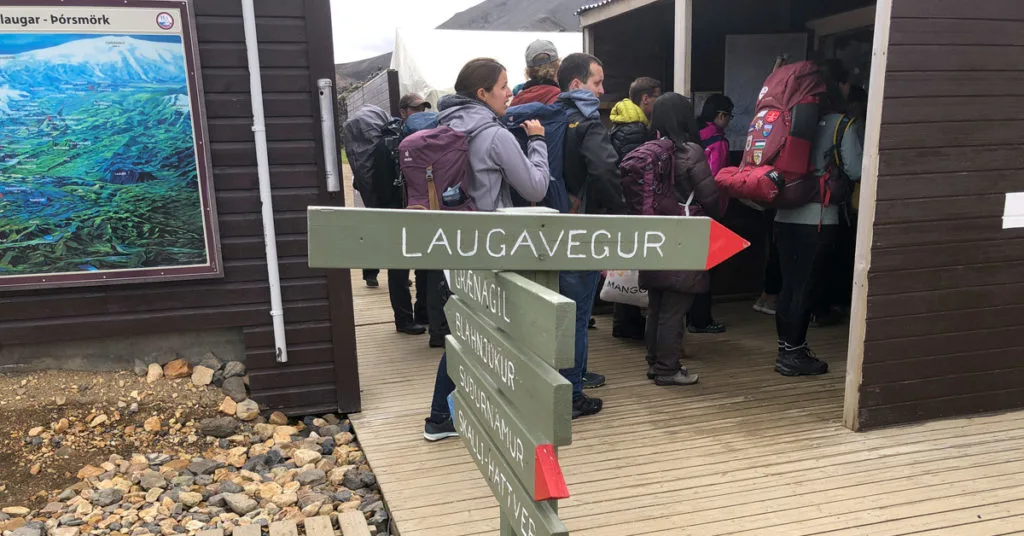
Flashpacking
This is quite a new term. It’s an upmarket form of backpacking as a tourist.
Rather than Lonely Planet guide clutching penniless students, flashpacking is awash with older, more affluent laptop clutching tourists, taking selfies as they explore the main tourist attractions and hot spots.
There’s very little hiking involved unless it’s a “must-do” attraction such as the Laugavegur Trail.
Backpacking Gear
Take a look at the 10 essentials for all hiking trips. It can be quite an investment building up your kit for backpacking trips. You might want to add them to your gift list! These are some specific items for backpacking:
Backpacks
These come in different sizes and styles. Your gear will determine the size of pack you choose to take on your hike. For ultralight backpacking aim to take a lightweight pack.
Some packs are really heavy even when they’re empty. I always find an ultralight backpack with less features and gizmos is best.
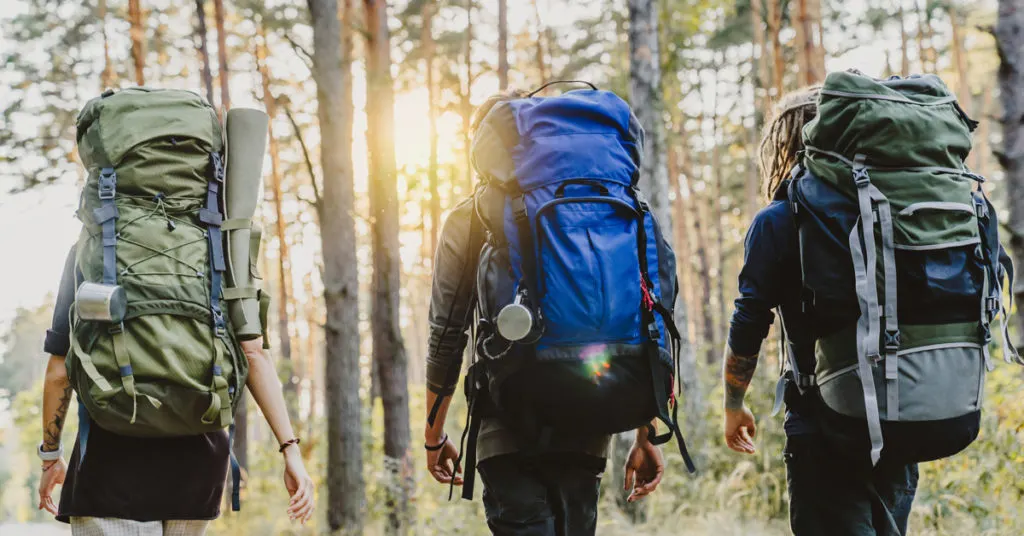
Sleeping bags
Down-filled sleeping bags are usually lighter and smaller when compressed than synthetic bags. They’re also good at retaining heat and have a high warmth-to-weight ratio. The downside is they’re useless when wet. Synthetic bags dry out quickly after getting wet in the rain or from condensation inside your tent.
Backpacking stoves
If you plan to cook while backpacking a lightweight backpacking stove is essential for cooking meals. Multifuel alcohol stoves are the most popular. They are very lightweight and extremely versatile. You can find fuel for these stoves wherever you are in the world. They’re compact, relatively easy to set up, and will work in challenging conditions.
Sleeping Mats
Unless you’re sleeping in a hammock, you’ll need a sleeping pad to insulate you from the ground – it’s no fun lying directly on the cold hard surface of the earth.
Kitchen Supplies, Food & Water
For cooking, you’ll need to carry utensils, a pot with a pot grabber, a dish to eat out of, a mug for essential tea or coffee, and eating utensils. A collapsible water container is really handy.
Food supplies should be lightweight and full of calories, such as freeze-dried meals, porridge, chocolate bars and trail mix.
Water bottles and water-treatment supplies are essential.
Emergency and hygiene supplies
First aid kits – the size and contents will depend on the length of your hike. Insect repellent, blister kits, and sunscreen are all essential items.
Leave no trace – so pack in and pack out toilet paper and take a camping trowel.
Backpacking boots or hiking shoes?
Backpacking vs hiking tends to dictate your footwear choices. The key is to choose footwear that suits the terrain and weather conditions you’re hiking through. If there are long distances involved, lightweight trail running or hiking shoes may not be the best.
If you’re backpacking and carrying heavy loads, hiking boots with good ankle support are often the best option. It can be harder to balance with a big pack and good supportive boots will protect your ankles.
Conclusion: Backpacking vs Hiking
Backpacking is just like hiking, but you’re carrying your gear for overnight hikes.
When most people think of backpacking they imagine long trips through the wilderness that take days or weeks to complete.
Hiking trips don’t need to be this long. Day hikes and short overnight trips can be a fun way to explore nature and the national parks without committing too much time away from work and other commitments.
Give hiking a try – it’s a great way to get fit!
